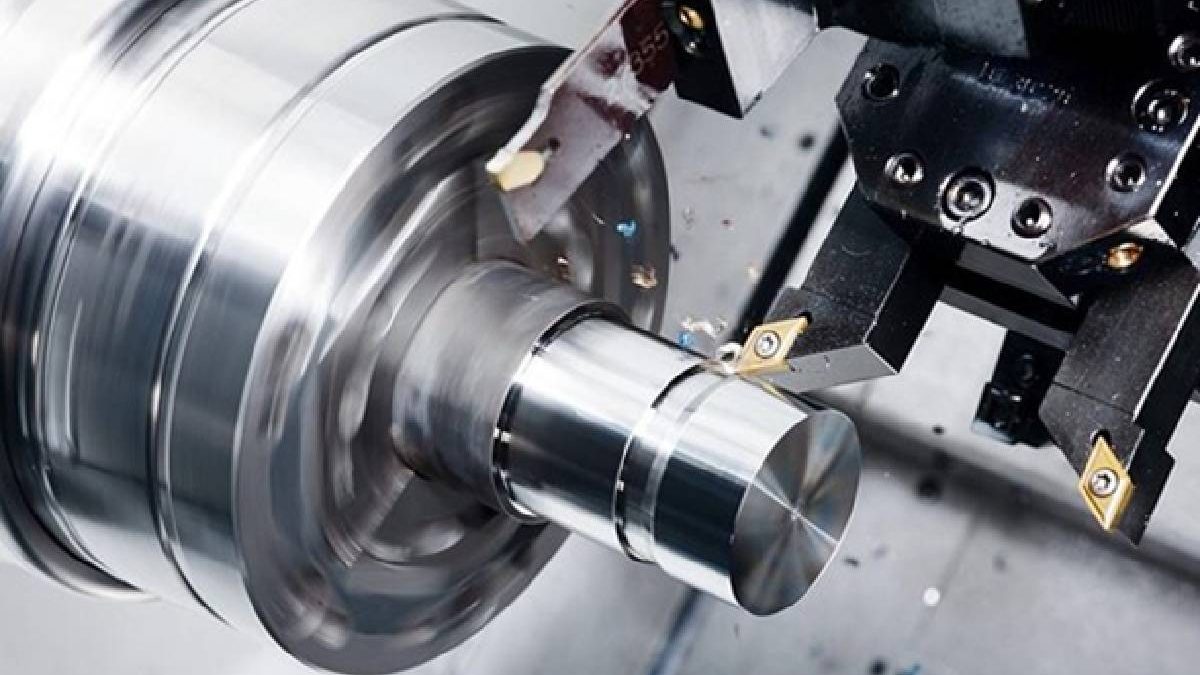Are you in search of precise and reliable machined parts for your business? CNC-turned parts could be the best solution. Made using computer-controlled control, CNC machines can produce parts that require high precision and precision with consistently good results.
These parts can be utilized in various industries, from furniture fittings to aerospace engine components. We’ll take you through the CNC turning manufacturing details. If you’re keen to know more about this fantastic manufacturing technique and its numerous advantages, keep reading!
Table of Contents
How Does CNC Turning Work?
The CNC Turning procedure is where the material used as an essential component gets held to the Turning lathe. one cut-off tool moves in a parallel towards the plane of the rotation, thus shaping the material. The precise measurements are fed to a machine through CAD software.
When the computer has all the directions, it controls the lathe to ensure the components are made according to the specified specifications.
This is distinct from conventional machine machining because it is the machine that runs the rotation, not an actual cutting device.
Due to their operation, CNC Turning is typically used to produce more oblong-shaped or cylindrical components. It is also favored over CNC Milling and 3D printing because of its capability to quickly create multiple versions of the same part, all from a single piece of material.
Advantages of CNC Turning
If you compare manual Turning with there are many reasons why manufacturers choose to use computer-aided technology. It’s more than just cost-effective. However, CNC turning manufacture also increases productivity and speed, which means you can make many components within a shorter time.
With the improved level of accuracy that CNC Turning provides, manufacturers can also reduce production waste since they can get more from the raw material they use.
What can CNC Turning Parts be Made?
CNC Turning is a highly flexible manufacturing method used for various purposes. Although it is typically related to the aerospace, automotive, and engineering sectors, It is also used to create items that look like works of art or ornaments.
The CNC turning components which are the most frequently produced, are divided into three broad classes that are:
Metal Components
CNC turning parts made of metal are usually utilized in the automotive sector. Some components can be made from aluminum, brass, and steel.
- Steel components: CNC Turning parts made from steel are robust and economical, but they can be more costly than their aluminum counterparts. They are primarily used in the automotive and aerospace industries.
- Aluminium Components: These components are primarily used in high-tech because the material is light and sturdy. It’s also impervious to corrosion which means aluminum is suitable for many applications.
- Brass Components: Items made from brass are typically connected to electrical contacts, hardware, and other products for commercial use. They are easy to work on and are very economical.
Acrylic Components
Contemporary acrylics are versatile and can be used for many CNC turning parts. These include intricate details for machinery to microfluidic devices, all to corporate logos and signs. Acrylic is also used to create sculptures and other ornaments at work or home.
Electronic Components
CNC Turning can be used to manufacture circuit boards printed with ink. Due to the higher accuracy offered by computer-aided manufacturing, the products are highly efficient electronically.
Important Design Considerations for CNC-Turned Parts
When it comes to component designing, considerations about design are crucial to the quality of the final product. This article will review some of the five most vital design aspects for CNC-turned parts.
● Material selection
The material you choose for CNC-turned parts can significantly impact its overall appearance. For instance, metals such as aluminum or brass are pliable, soft, and, therefore, easy to work with. However, they are also known to be weaker and less resilient than more hard-wearing materials like stainless steel as well as titanium.
To make the most appropriate choice, it’s essential to think about the purpose and the desired characteristics of the component and the abilities of the CNC turn process. The CNC machine material should be sturdy enough to meet machining demands. However, it must also be heat-resistant and wear-resistant.
● Tolerance
In any CNC-turning component, hidden risks could result in the element being beyond tolerance. The causes of these risks could be numerous and diverse, but most of the time, they can be linked to how the part was designed. The piece is the part itself. To reduce the possibility of problems arising, the designer must consider the tolerance of machining in the design.
An aspect must be tight enough to produce the desired outcomes. If an element has a loose fit, the function and fit of the component could be affected. This is why finding an equilibrium between the two extremes is crucial. The best method to accomplish this is to choose tolerances suitable for the particular application.
● Surface finish
When deciding on the layout of the design of a CNC Turned Part, the finish of the surface is a crucial aspect to take into consideration. The goal of achieving the desired finish may be challenging as a proper choice of materials, or tooling may result in good outcomes. A component with a poor finish may be prone to various issues, including an increase in friction, excessive wear, and a less appealing aesthetic.
In contrast, a piece with a top-quality finish will run more efficiently and smoothly and appear more appealing. When choosing a surface finish for CNC-turned work, it is essential to consider the specifications of the particular application.
● Grooving and threading
When designing a particular CNC-turned piece, it is crucial to consider the procedure of threading and grooves. Threading is a method to join two pieces through interlocking, whereas grooves allow for an easy transition across two different surfaces. Combined with these features, they can create a more robust joint that can withstand a more significant load.
Related posts
Recent Posts
How to Install Magento on Ubuntu? – Mirasvit
If you’ve opted for Magento for your e-commerce store, consider using extensions to customize it efficiently. Check out Mirasvit, a…
What is a random number generator?
Choose a number – any number between zero and infinity. Which number did you choose? Congratulations, you are now a…



